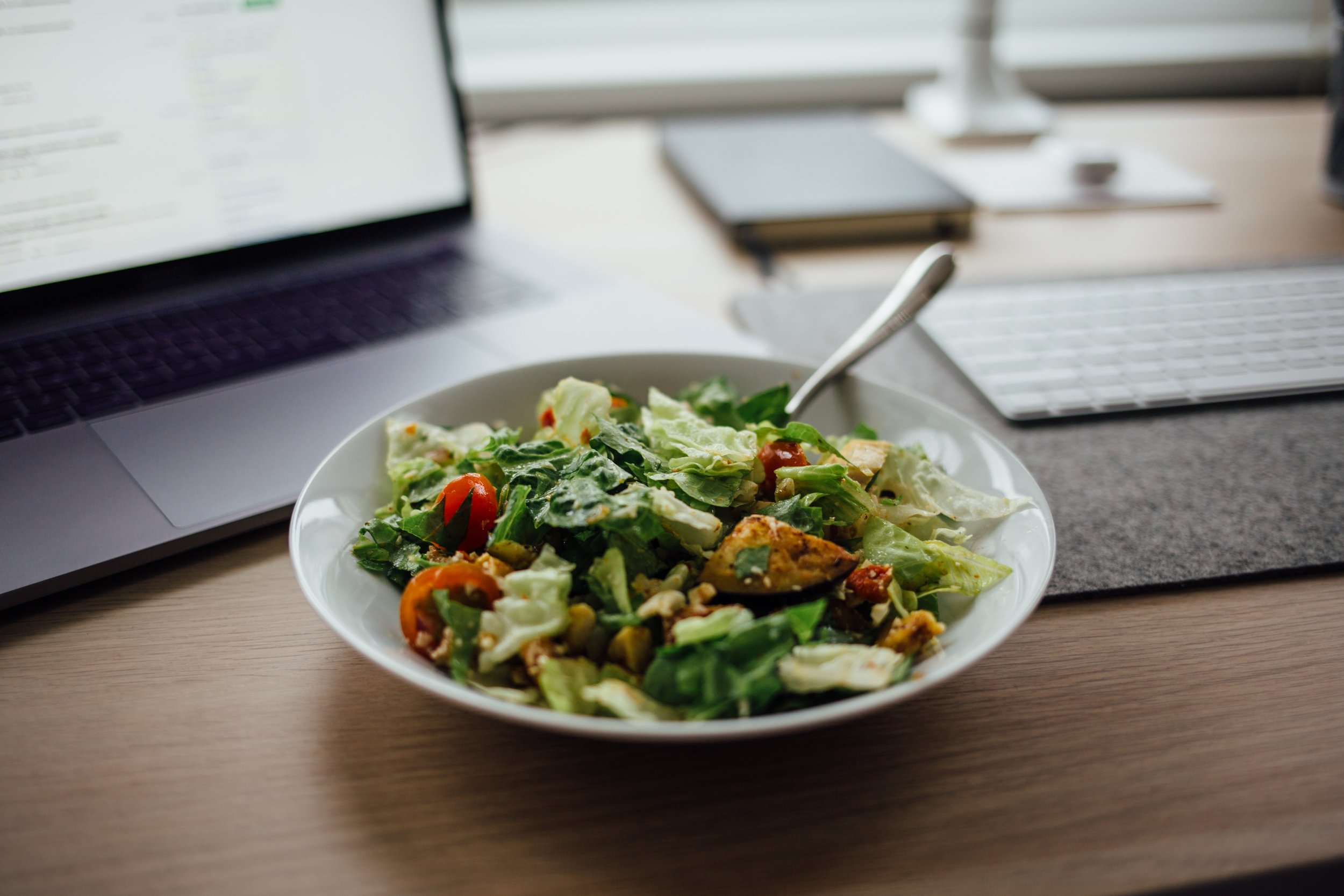
Can we all agree that vegetables are good fuel for our bodies?
Between fiber to keep hunger at bay, vitamins & minerals necessary to fuel our cells, antioxidants for healthy skin & immunity boost, and phytonutrients for energy & good health – vegetables provide a lot of what our bodies need.
The problem is, it’s not always easy. A drive through coffee to boost our energy or protein bar to stave off hunger are often times all we have time for.
There are two big problems I find people have when it comes to veggies:
-
It takes time to prepare them – washing, cutting, cooking ect.
-
They get bored of the basics – lettuce in salads and steamed broccoli
Let’s find a solution to both of those problems. We have 7 tips to get more veggies in your day with minimal work and lots of variety. . . . with some of these tricks you won’t even know you are eating vegetables at all.
1. Prepare For Success
Make a quick veggie snack easy to grab. Cut up a batch of bell peppers, cauliflower, broccoli, carrots, or cucumber when you bring your produce home from the store. Store them in a large glass container in the fridge or pre-package them in smaller bags or containers to grab & go.
It’s easy to add these prepared vegetables to salads and casseroles throughout the week as well. We all know that when veggies stay unwashed in that bottom drawer, you don’t just miss out on a healthy snack but waste a lot of money on rotten produce.
2. Start Your Day with Vegetables
The go to breakfast items in most homes these days are cereal, bagels or pastries. The start of your day will be much improved by opting for some protein and vegetables, instead of just sugar and grains.
In fact, lots of breakfast dishes are better with vegetables. How about omelets, frittata, even veggie topped toast. You can easily find these as make ahead breakfast dishes that you can just pop in the microwave in the morning.
3. Add Vegetables to Sauces
My favorite way to sneak veggies into my kids is with sauces. While you are cooking sauce, such as marinara, simply add veggies of your choice, such as chopped onion, carrots, spinach or bell peppers.
You can also puree veggies and add them to sauce if you want to be more sneaky. For example, roasted and pureed cauliflower is great to add to white sauces. I cook my veggies and make purees ahead of time. I divide them into individual servings that I would use in a recipe and freeze them for later.
4. Use Easy Frozen Vegetables
Frozen vegetables are the next best thing to fresh from the garden. They are usually picked at their peak and frozen right away. In this way, they retain their nutritional value better than canned vegetables and usually their fresh taste as well.
Frozen vegetables keep waste down (no more wasted greens lost in the produce drawer) and are great to have on hand when you haven’t made it to the market. They are ideal to add to soups, stews, and scrambles and can be combined with pantry staples like pasta or quinoa for an easy meal.
5. Substitute High Carbs with Vegetables
High carb sides such as pasta and rice can be substituted with vegetables for added nutrition. I make veggie noodles out of zucchini, yellow, or butternut squash using a spiralizer. Simply top the “noodles” with the same protein or sauce you would put on your pasta.
For rice, cauliflower or broccoli in the food processor will get you “grains” to cook. Luckily, most grocery stores have both fresh and frozen veggie noodles and rice that you can buy ready to add to any recipe.
6. Load Up Your Salad
Salads are an easy way to add several servings of vegetables to your day – and they don’t have to be boring. Some good options are sliced peppers, onion, chopped carrots, shredded radishes, cabbage or watercress.
Try both raw and cooked vegetables – roasted butternut squash is one of my winter favorites. The more vegetables you add, the more variety you get as far as flavor and nutrition.
7. Make a Big Pot of Vegetable Soup
Soups are another great way to consume multiple servings of vegetables in one sitting. They also are easy to make on the weekend and heat up when in a rush throughout the week.
You can cook veggies into a broth or puree vegetables (such as tomato for red or cauliflower for white) as a base to add other ingredients to.
It doesn’t have to be complicated!
If you just think about eating more soups and salads, you easily increase your veggie intake. Add just one more serving per meal and you will greatly increase your intake of fiber, vitamins and minerals.
Still have questions about vegetables, fiber, protein, fats, or serving sizes? Join us at our next nutrition workshop learn the best balance of each of these to meet your individual goals. Click the link below to receive information on our next Free Hands On Workshop.




